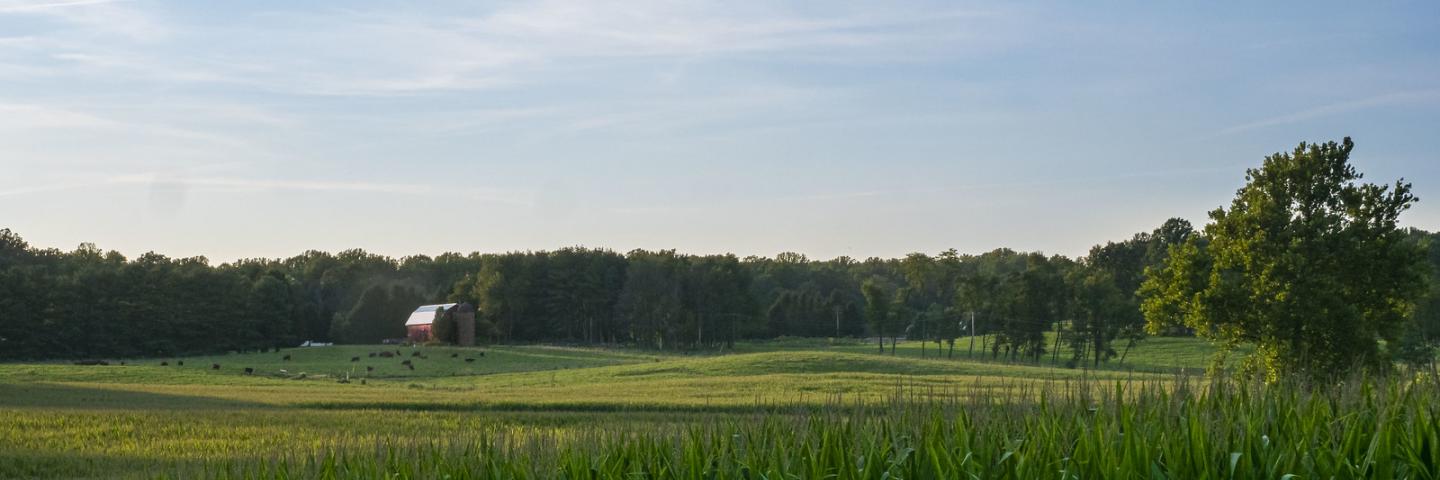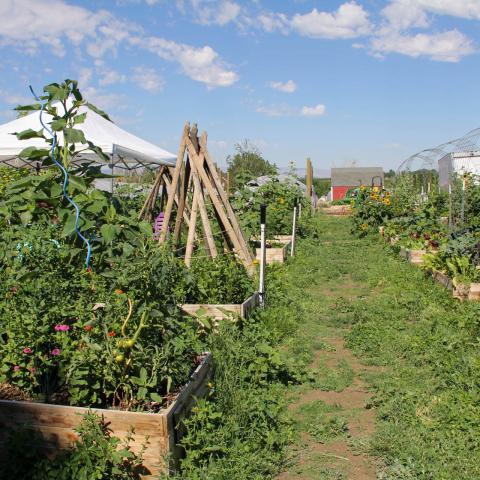
Adaptation actions can be taken in response to local climate change impacts and projections to reduce risks and vulnerabilities, build resilience and help to maintain productivity.
Effective beginning 5/20/2025: Please note this site is under review and content may change.
Climate change poses environmental, social, and agricultural challenges that require adaptation measures to help adjust to new or changing climatic patterns. Adaptation actions can be taken in response to local climate change impacts and projections to reduce risks and vulnerabilities, build resilience and help to maintain productivity. Adaptation actions in agriculture may include changing or adjusting various management practices and inputs, including nutrient inputs, tillage practices, crop species, crop rotations, harvest strategies, livestock management, irrigation, and uses of natural resources.
NRCS along with other USDA agencies provides resources, tools, programs and services to assist agricultural producers in understanding and adapting to the impacts of climate change they face. NRCS can support producers who want to voluntarily implement climate-smart management solutions to help adapt their operations and build resilience, while maintaining productivity and conserving and restoring the natural resources on their lands. NRCS also helps producers pursue voluntary Climate-Smart Mitigation Activities that address the causes of climate change by reducing greenhouse gas emissions and increasing carbon sequestration on their operations. Many of these mitigation activities may provide adaptation benefits as well.

The NRCS Climate Change Adaptation Plan highlights seven areas identified as key agency vulnerabilities and prioritized actions to address them.
USDA and NRCS Climate Change Adaptation Plans
Climate change has the potential to disrupt USDA’s efforts to meet its mission and goals. The vulnerability of USDA operations and programs to climate change is highly dependent on the magnitude and pattern of climate changes and their local impacts.
In October 2021, USDA released its Department-wide Action Plan for Climate Adaptation and Resilience that describes how USDA will integrate climate adaptation into its mission, programs, and operations. The plan, an update to the 2014 Adaptation Plan, identifies key vulnerabilities to the effects of climate change in USDA’s mission and establishes a framework for addressing these impacts across the Department.
In 2022, NRCS finalized the NRCS Climate Change Adaptation Plan, an agency-specific plan that identifies and prioritizes climate vulnerabilities and actions to integrate climate change into its programs, operations and decision-making. The plan provides a framework organized around seven main action areas:
- Action Area 1: Increase climate literacy and staffing capacity to deliver assistance that is reflective of climate change
- Action Area 2: Enhance science, research, and data for understanding, measuring, and tracking climate-related impacts and outcomes
- Action Area 3: Integrate climate information into current business procedures, assessments, and opportunities
- Action Area 4: Ensure current and future conservation investments are reflective of climate change needs
- Action Area 5: Assess and address disproportionate climate change impacts on vulnerable communities
- Action Area 6: Strengthen partnerships and collaboration to address climate change
- Action Area 7: Address risks to agency infrastructure
Climate Change Adaptation Resources
- The USDA Climate Hubs Website hosts a collection of data and resources on climate impacts in the United States, including information on Disturbances, Extreme weather, and Seasonal shifts.
- Adaptation Resources for Agriculture: Responding to Climate Variability and Change in the Midwest and Northeast. This technical bulletin was developed specifically to meet the unique needs of agricultural producers and provide educators and service providers in the Midwest and Northeast regions of the United States with information and resources to help farmers increase their resilience to weather extremes and a changing climate. It provides a flexible, structured, and self-guided process to identify and assess climate change impacts, challenges, opportunities, and farm-level adaptation tactics for improving responses to extreme and uncertain conditions.
- NRCS Practices Can Support Climate Change Adaptation: Brochure Series. The USDA Northern Forests Climate Hub and the Northern Institute of Applied Climate Science (NIACS) partnered with NRCS to develop a series of brochures that describe options landowners and land managers have to adapt to climate change. The brochures describe how NRCS programs and practices can help landowners achieve their goals while supporting climate adaptation.
- State Climate Summaries, produced by the National Oceanic and Atmospheric Administration (NOAA), provide state-level climate information. This 2022 version provides new information and extends the historical climate record to 2020 for each state. The summaries cover assessment topics directly related to NOAA’s mission, specifically historical climate variations and trends, future climate model projections of climate conditions during the 21st century, and past and future conditions of sea level and coastal flooding.
- USDA Climate Hub: Vulnerability Assessments. The USDA Climate Hubs published a series of regional vulnerability assessments to provide their stakeholders with a baseline “snapshot” of current climate vulnerabilities, along with specific adaptive management strategies to increase the resilience of working lands in each region. They also include regional greenhouse gas profiles, which identify opportunities to reduce emissions and increase carbon sequestration. Each document also gives an overview of how partner USDA agencies are being affected by and addressing changing climate conditions.
- The National Climate Assessment assesses the science of climate change and variability and its impacts across the United States, now and throughout this century. Volume II of the Fourth National Climate Assessment (NCA4), published in 2018, focuses on the human welfare, societal, and environmental elements of climate change and variability for 10 regions and 18 national topics, with particular attention paid to observed and projected risks, impacts, consideration of risk reduction, and implications under different mitigation pathways. The Climate Science Special Report (CSSR), published in 2017, serves as the first volume of NCA4. It provides a detailed analysis of how climate change is affecting the physical earth system across the United States and provides the foundational physical science upon which much of the assessment of impacts in Volume II is based.
- The Climate Toolbox provides County level climate information on historic trends for variables specific to agriculture as well as projections for future conditions (contiguous US only).
- The Climate Change Response Framework, produced in partnership with the USDA Climate Hubs, is a collaborative effort that addresses the major challenges that land managers face when considering how to integrate climate change into their planning and management. Its Adaptation Workbook enables natural resource professionals to consider the potential effects of climate change on their lands and to then design actions that can help reduce risk and increase the ability to cope with changing conditions.
- Drought.gov is produced by the National Integrated Drought Information System, a multi-agency partnership that coordinates drought monitoring, forecasting, planning, and information at national, state, and local levels across the country.
- Social Considerations in Adaptation to Climate Variability examines key social factors that influence producers’ decisions relative to adapting to the impacts of extreme weather conditions. Key social considerations such as current practices, personal, farm structure, and community characteristics are addressed.
- Climate Change and Agriculture in the United States: Effects and Adaptation (2013) provides an overview of climate change effects on U.S. agriculture and options for adaptation.
- Visit Farmers.gov | Climate-Smart Agriculture and Forestry to learn how USDA programs support climate-smart agriculture and forestry.
- Use the Disaster Assistance Discovery Tool to learn about USDA disaster assistance programs that might be right for you.




